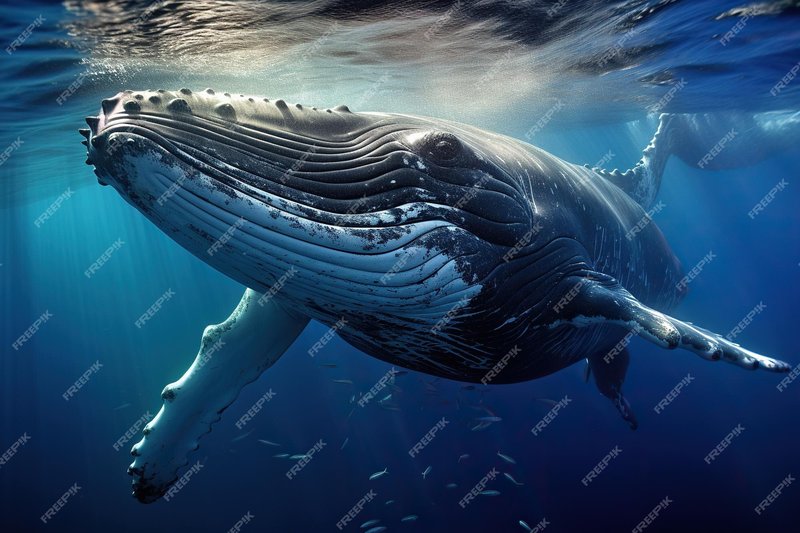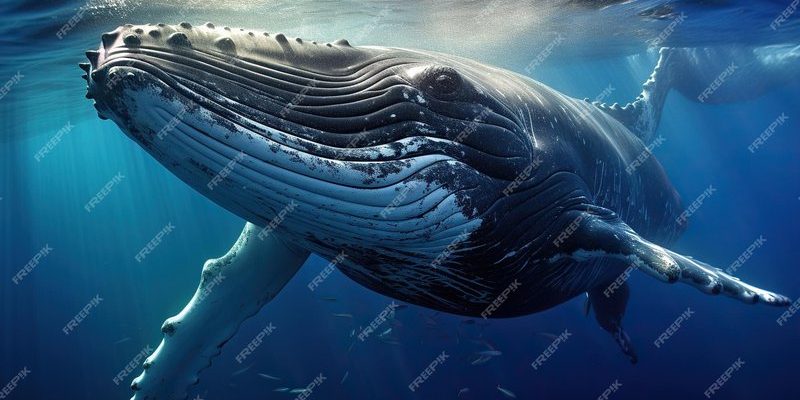
Much like how a tree provides shade and shelter, humpback whales offer numerous benefits to their oceanic habitat. They influence the marine food web, contribute to nutrient cycling, and even impact climate regulation. In this piece, we’ll explore their various roles and why it’s essential to protect these incredible animals for the health of our planet.
Understanding Humpback Whales
Humpback whales are known for their distinctive humped backs and long pectoral fins. These magnificent creatures can weigh up to 40 tons and reach lengths of about 50 feet! They’re famous for their mesmerizing songs, which can travel for miles underwater. But there’s so much more to these whales than their size and songs.
Humpbacks are found in oceans worldwide, migrating thousands of miles between feeding and breeding grounds. Their journeys can take them across entire ocean basins. During the summer, you’ll find them in colder waters, where they feast on small fish and krill. In the winter, they migrate to warmer waters to breed and give birth. This seasonal movement not only affects their own survival but also impacts the ecosystems they traverse.
Before we delve into the specifics of their roles, it’s important to note that humpback whales are a part of a larger marine community. They interact with various species, from tiny zooplankton to large predatory fish, creating a complex web of relationships that keeps the ocean vibrant and healthy.
The Humpback Whale’s Influence on Marine Food Chains
You might be wondering how a whale that weighs as much as a bus affects the food chain. Well, here’s the thing: humpback whales are at the center of a remarkable food web. They consume vast amounts of prey, mainly small fish and shrimp-like animals called krill. When they feed, they don’t just gobble up these creatures; they help regulate their populations. Without humpback whales, these prey species could explode in numbers, disrupting the balance of the ecosystem.
During their feeding season, humpbacks often use a technique called bubble net feeding. This is where a group of whales works together to create a circular wall of bubbles, trapping fish within it. It’s like a well-orchestrated team effort—one that not only demonstrates their intelligence but also significantly impacts local fish stocks and overall ocean health.
Furthermore, when humpback whales dive to the ocean floor to feed, they stir up nutrients in the water. This process, known as nutrient cycling, helps promote the growth of phytoplankton, the foundation of the marine food web. So, in a way, every bite a humpback takes supports the growth of countless other marine organisms!
Nutrient Cycling and the Oceanic Ecosystem
You might not think about the ocean as a big cycle, but it truly is. When humpback whales dive, they help carry nutrients from the depths to the surface waters through their waste. This nutrient-rich bio-availability is essential for smaller organisms, like phytoplankton and zooplankton, which form the base of the marine food web.
Here’s how it works: when humpbacks excrete waste, they release nitrogen and other essential elements back into the water. These nutrients fertilize phytoplankton, which are tiny plants that produce about half of the oxygen we breathe.
This nutrient cycling benefits not just the creatures that rely on phytoplankton for food but also improves the overall health of the ocean environment. A thriving population of phytoplankton leads to a healthier marine ecosystem and can even impact global climate patterns. So, every whale contributes to a thriving ocean, demonstrating how interconnected our world truly is.
Climate Regulation and Humpback Whales
You might not connect whales with climate change at first glance, but there’s a surprising link between these marine mammals and our planet’s climate. Humpback whales help mitigate climate change through carbon sequestration. When they dive and feed, they take in carbon from the atmosphere and store it in their bodies.
Once they die, their massive bodies sink to the ocean floor, effectively trapping that carbon for hundreds of years. This natural process of removing carbon dioxide from the atmosphere helps reduce greenhouse gases, making humpback whales silent heroes in the fight against climate change!
Moreover, with healthy whale populations, we can expect healthier marine ecosystems that can better withstand the variations brought on by climate change. Healthy oceans are crucial for maintaining our climate balance, and protecting humpback whales directly contributes to this goal.
The Importance of Humpback Whale Conservation
Sadly, despite their importance, humpback whales face numerous threats, including climate change, ship strikes, and entanglement in fishing gear. Conserving these gentle giants is not just about saving a species; it’s about protecting the intricate web of life they support.
To make a difference, awareness and action are key. Supporting marine protected areas, advocating for sustainable fishing practices, and promoting responsible whale watching are all essential steps.
You can also play a part by reducing your carbon footprint. Every little bit helps in the fight against climate change and contributes to healthier oceans. Remember, when you protect humpback whales, you’re protecting the entire marine ecosystem.
Final Thoughts
So, next time you think about the ocean, remember that humpback whales are playing a vital role in keeping that ecosystem balanced and healthy. These gentle giants might seem distant, but their impact is vast and incredibly significant to our planet. By understanding their roles and advocating for their protection, we can contribute to a healthier ocean for generations to come.
Conserving humpback whales is about more than just one species; it’s about the future of our oceans and, ultimately, us. Every action counts—let’s make sure we protect these magnificent creatures and the ecosystems they nurture.

